In the opulent court of 16th-century France, King Henry II, also known as Duke d’Orleans, ruled with a firm hand and a keen appreciation for the arts. His reign saw the flourishing of Renaissance culture, with the monarch actively involved in ambitious projects such as the reconstruction of the Louvre and the grand chateau of Anet.
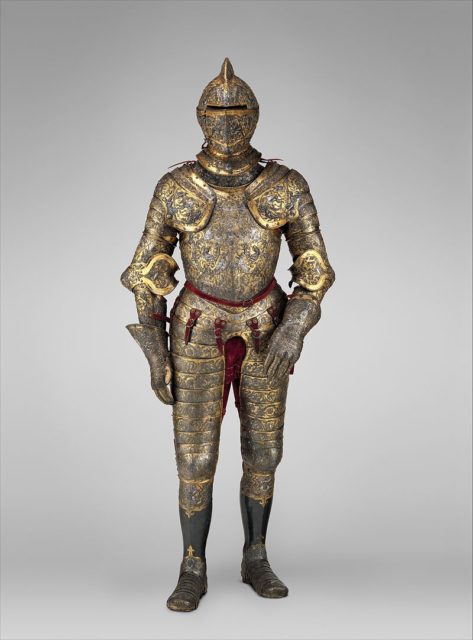
Yet, beyond the corridors of power and the glittering court, King Henry harbored a secret passion—a love that transcended time and conventions. At the tender age of 16, he fell deeply in love with Diane de Poitiers, a beautiful aristocrat twenty years his senior. Despite his marriage to Catherine de’ Medici and the responsibilities of raising future monarchs, Henry’s heart remained entwined with Diane until the end of his days.
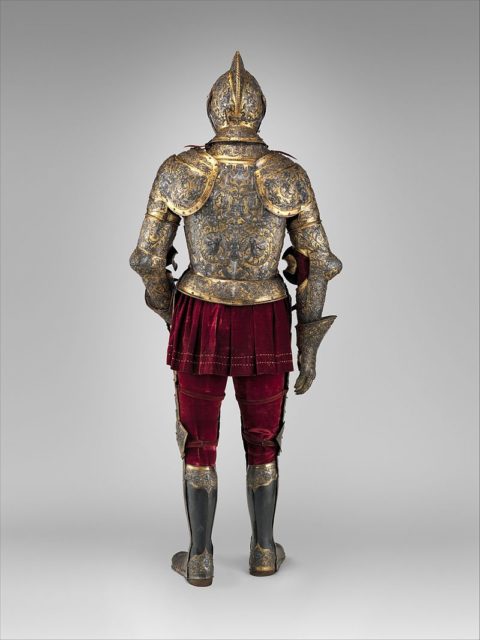
The back side of the Parade armor. Photo Credit
One of the most splendid expressions of King Henry’s royal taste was his Parade Armor, a masterpiece that adorned his regal figure during ceremonial occasions. Crafted between 1553 and 1555, this intricate suit of armor was a testament to the artistic prowess of Etienne Delaune, a French goldsmith and engraver. The Parade Armor, now on display in the Metropolitan Museum of Art in New York, tells the story of Henry’s military prowess and triumphs.
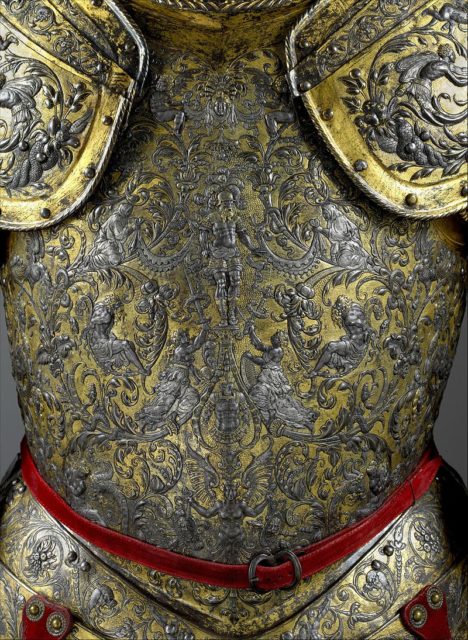
The center of the breastplate is decorated with a figure of a Roman warrior receiving a tribute of arms from a pair of kneeling ladies. Photo Credit
The breastplate of the armor showcases a Roman warrior receiving tribute from kneeling ladies, while on the back, Apollo slays the monster Python. Throughout the armor, fantastical characters and Henry’s badge, a crescent moon, are meticulously depicted. The craftsmanship is so exquisite that historians and art critics consider it one of the most elaborate examples of its kind in France.
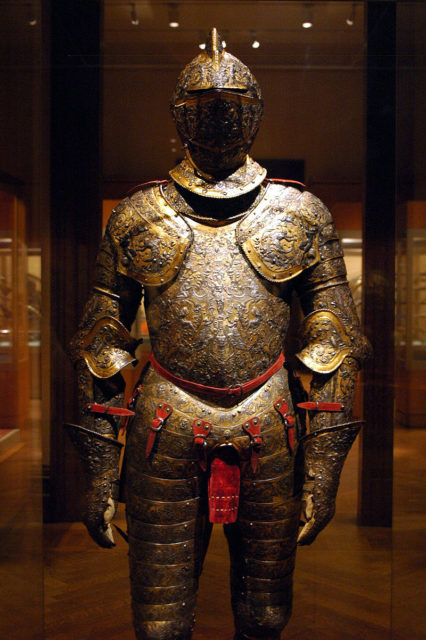
It is on display in the Metropolitan Museum of Art in New York. Photo Credit
Delaune’s artistry extended beyond the Parade Armor; he designed shields, horse panels, and another full suit for Henry, some of which are now housed in prestigious museums like the Louvre and the Museum of Ethnology in Vienna.
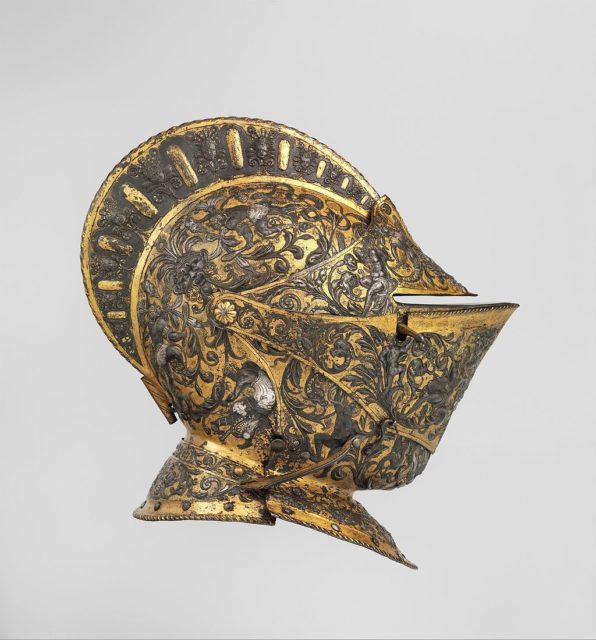
The armor, though a work of art, was not practical for the battlefield. It served a different purpose—to glorify the military might of the wearer during state occasions and processions.
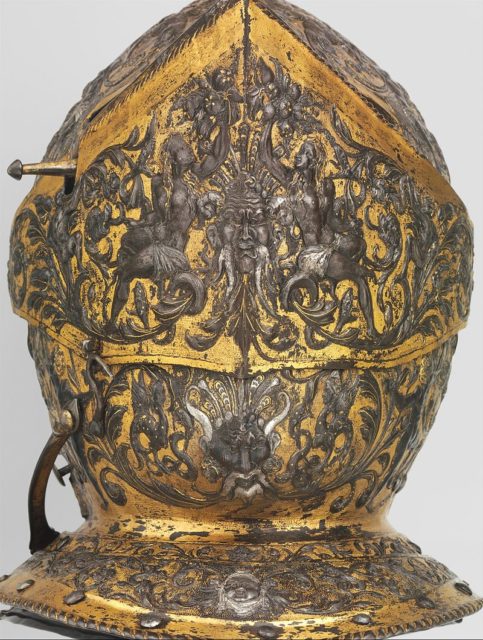
Tragically, the illustrious reign of Henry II came to a sudden and fateful end. A jousting accident claimed the monarch’s life when a splintered lance fragment pierced his eye, leading to septicemia. The details of the armor he wore that day remain unknown, leaving behind a legacy of artistic splendor and a love story that defied the constraints of time and societal norms.